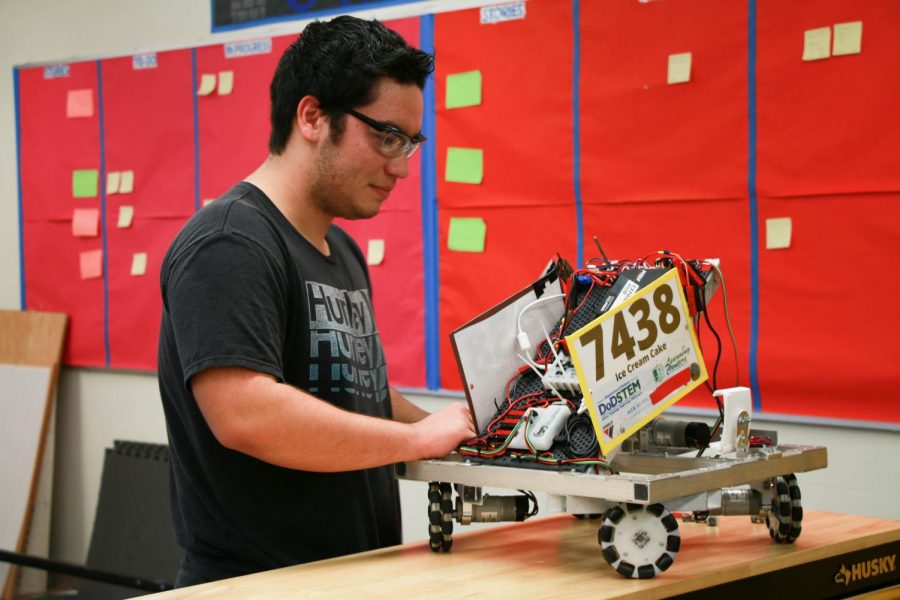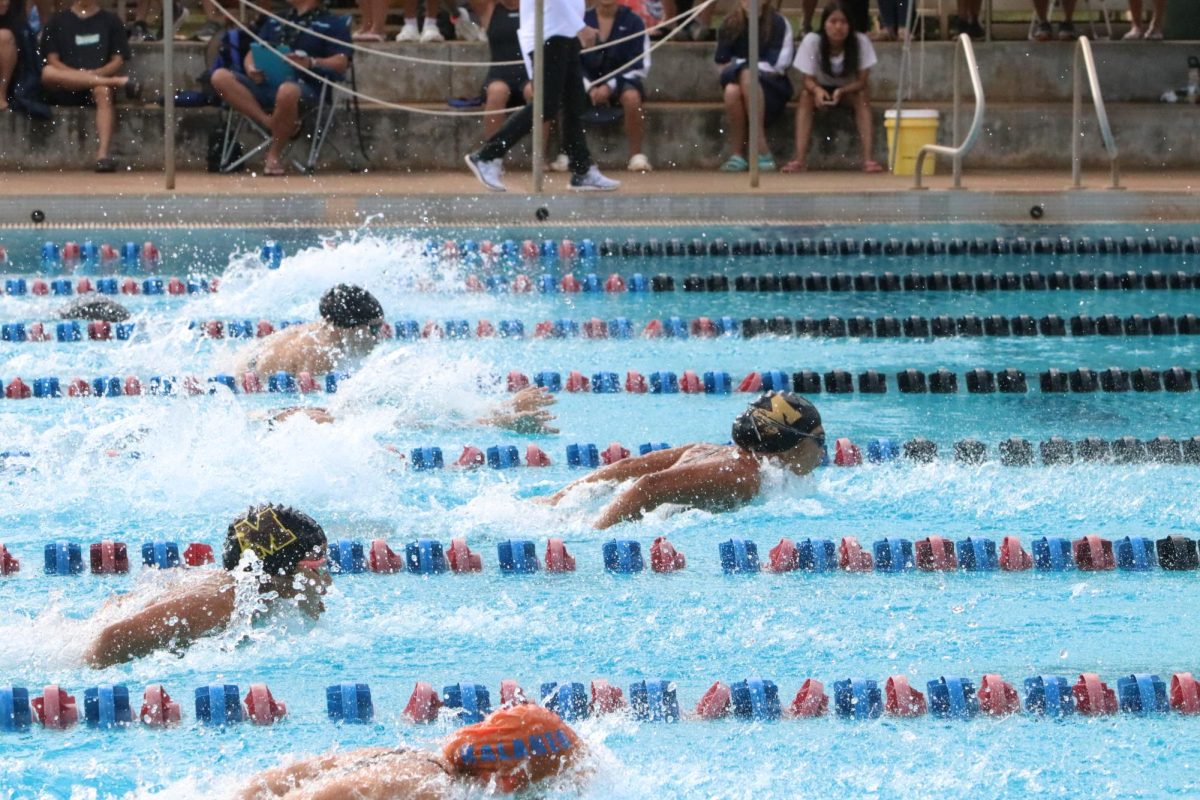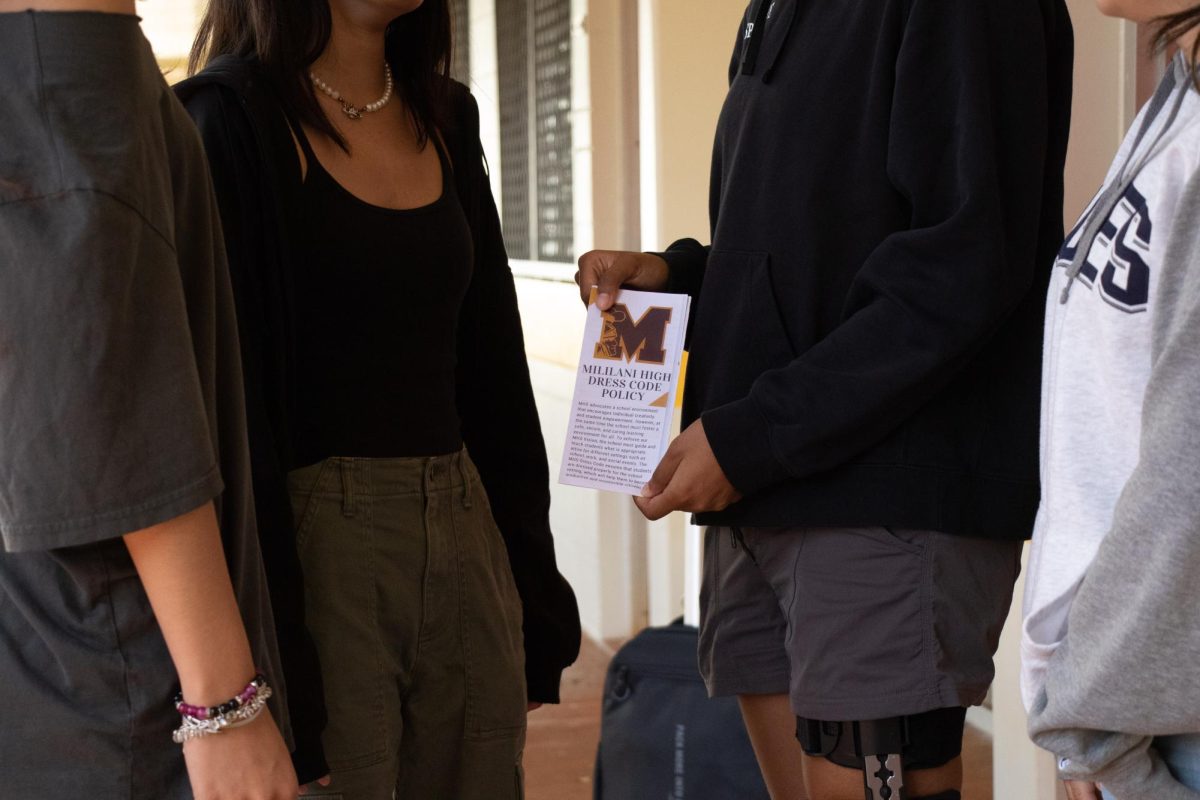FIRST Robotics Gets 4th in Competition
December 14, 2017
On Saturday, Nov. 25, the MHS FIRST Robotics team hosted and competed in a relic recovery tournament. As their last competition before states, the students competed in matches alongside 11 other teams to determine their placement and alliances for the state competition. They spent countless hours preparing to compete and were able to place fourth out of 12 teams.
“At times, we’ve performed less optimally than we would have liked but the improvements that we’ve made have been a good learning experience for our team as whole,” said electrical subteam lead Junior Ian Eshelman.
At the competition, the students competed with their robot in relic recovery. “It’s a game that’s centered around the main scoring element, a six inch cube. They have to stack it into a pattern for points. There’s an autonomous mode where they have to pre program instructions and then it goes into a driver controlled period where they’re actually remote controlling it. There’s what they call the endgame where they balance on a balancing stone— a rocking platform that they have to balance the robot on. The relic part is another game piece that they can, if they choose to, pick up and move, place it in a zone outside of the field,” said FIRST Robotics Instructor Tyson Kikugawa.
Aside from being judged on how their robot does in the competition, the teams are also scored on their engineering process. “We have to make something called an engineering notebook where we describe how we built and made the robot. That’s the biggest factor when it comes to judging,” said assistant project manager Senior Kaikoa Viveiros. The notebook is designed to demonstrate the students’ ability to think critically as they design and test their robots. “They showcase their decision making process and their design process— how did they come to these decisions, not only ‘does the design work’ but how did you come up with this design,” said Kikugawa.
After each competition, the team takes the time to look at how they did and figure out what they need to dedicate their time to improving. “I feel we did better than the last couple competitions,” said Eshelman. “This time we had an entirely fabricated robot, as opposed to using the modular parts as we had in the past, which allowed our robot to perform much more fluidly than using the parts that we didn’t make ourselves.”
To perfect their robots and get them built in time for competitions, the FIRST Robotics students have to commit most of their after school time to prepping their robot. “We’ve been meeting almost daily from 3 to 6 p.m. on weekdays to figure out what we need to get done to make our robot competition ready, such as putting our frame together, fabricating all the metal parts, soldering all the electronic parts and programing the robot so that it can run properly during the competition,“ said Eshelman.
The students spend a large amount of their time testing their robot and trying to account for any possible errors or complications that they might encounter. “We have the members of our subteams tell us if there is any problems that they foresee and try to plan around those problems,” said Eshelman. The members who have more experience in robotics rely on their past experiences to help them in building the most effective and problem free robot that they can. “You kind of foresee the problems that came up in the past and there’s ways to prevent that,” said Viveiros.
FIRST Robotics is a highly collaborative effort that depends on the more experienced members working effectively with the new members. “I guide and mentor the other members,” said Eshelman. “If someone doesn’t know how something works—how certain electronics need to be put together—we’ll put an experienced member along with that member that doesn’t understand so that they can help guide them through that.”
The FIRST Robotics competitions focus on the idea of “coopertition,” giving the students the chance to work together and make friends while also competing simultaneously. “You are competing against the other teams, but at the same time you want to help the other teams out and make sure that they’re competing at the best that they can be so that the competition is as fair as possible,” said Eshelman. Kikugawa said, “It’s also a good networking opportunity to meet other teams, meet other like minded people, and get that friendly competitive experience.”
The competitions are important in helping to get the students hyped up and ready to keep building. “I get a good sense of adrenaline when I am competing so it gets me excited to see the outcome of the match,” said Viveiros. The competitions serve as motivators for many of the students to strive to build a better robot. “I think, ultimately, competition kind of forces you to improve. If you’re just doing it for fun, there really isn’t an end to it and sometimes not having that end makes it harder to have a goal and set targets for yourself. Competition is a good way to kind of see where you’re at and see ways that you can improve that you don’t get if you’re just playing around the classroom,” said Kikugawa.
With their season coming to a close, the FIRST Robotics team continues to make revisions to their robot in hopes of putting their best foot forward as they compete at States on Saturday, Dec. 9, at Maryknoll High School.
-#####-




